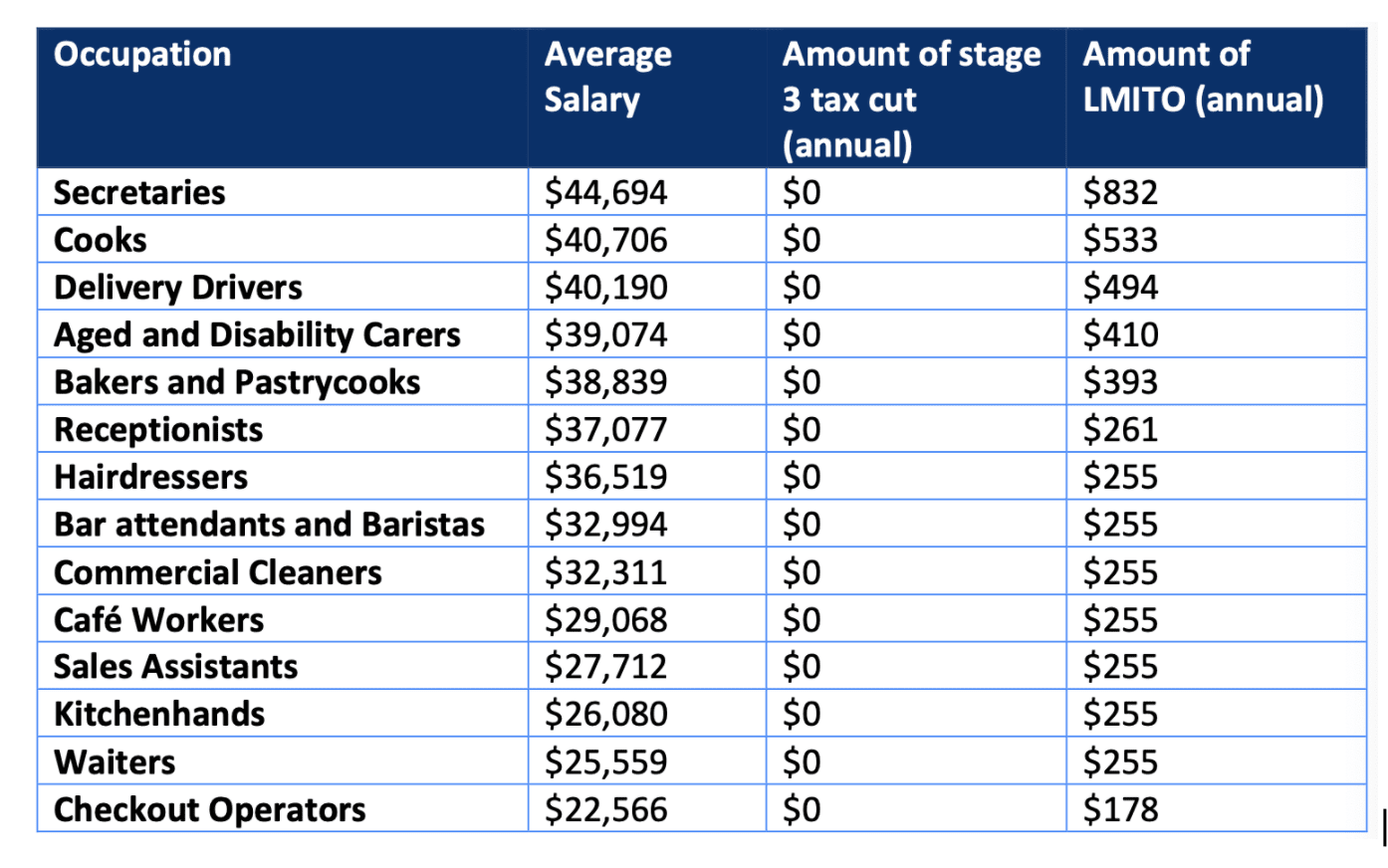
The Stage 3 tax cuts will come into effect in July 2024, while the LMITO is due to end this financial year.
Stage 3 tax cuts are budgeted to cost the government $15.7 billion per year, while the LMITO is worth $7 billion.
When the Stage 3 tax cuts are introduced, the top tax bracket will kick in at $200,001, an increase from the current top tax bracket of $180,001.
The 37% tax bracket which currently applies to incomes from $120,001 to $180,000 will be abolished, and the tax rate for a new bracket from $45,001 to $200,000 will decrease from 32.5% to 30%.
The Australia Institute research looks at the distribution of the tax cuts by occupation, using Australian Bureau of Statistics data on average incomes by occupation.
Those earning $200,000 a year or more – bank CEOs, politicians, surgeons, barristers – will receive a tax cut of $9,075.
If the LMITO is not extended and ends this financial year, it will mean 90% of taxpayers will be paying more tax next financial year. Even after the Stage 3 tax cuts come in, 80% of all taxpayers will be worse off.
More than 50% of the Stage 3 tax cut will go to the top 10% of taxpayers, according to the report.
This is also a gender story because men dominate higher paid jobs. Two thirds of the tax cuts will go to men, while women get only 33%.
For every $2 tax cut going to men, women get $1.
By contrast, the benefit of the LMITO is evenly distributed between genders. Men receive 51% of the benefit while women get 49%.
Those to receive the maximum LMITO – including teachers, bus drivers and midwives – will get some benefit from the Stage 3 tax cuts, but it will be smaller than the benefit from the LMITO. So if the LMITO is removed, they will be worse off, even after the tax cuts.

Dr Richard Denniss, Chief Economist at The Australia Institute, said the government’s planned tax cuts “will increase inequality in Australia”.
“It’s billionaires that benefit while battlers get slugged,” he said.
“The Stage 3 changes mean someone earning $45,000 will now pay the same marginal tax rate as someone earning $200,000.
“By cutting taxes for the higher-income earners, this extreme plan will make our tax system permanently less fair. It’s an attack on Australia’s fair-go, progressive tax system.”
“The Stage 3 plan not only fails the pub test, it’s bad economics.
“Low and middle-income earners are more likely to spend their tax cut back into the economy, creating jobs and growth, while the highest income earners are more likely to stash the additional cash away.”
With the government already under fire for failing to address workforce shortages in aged care, its current tax plan will do nothing to entice workers into the sector, or encourage those already working in aged care to stay.